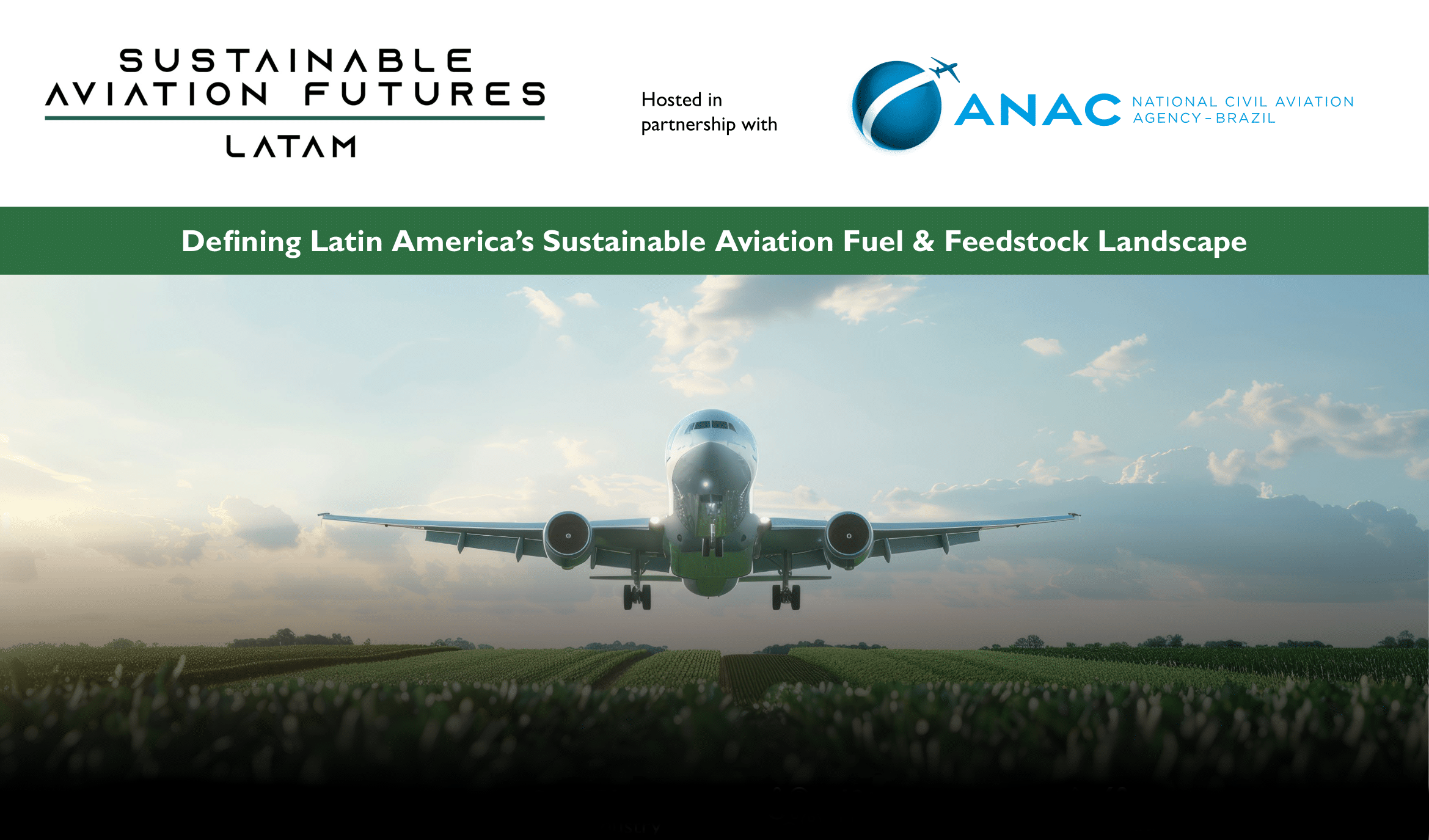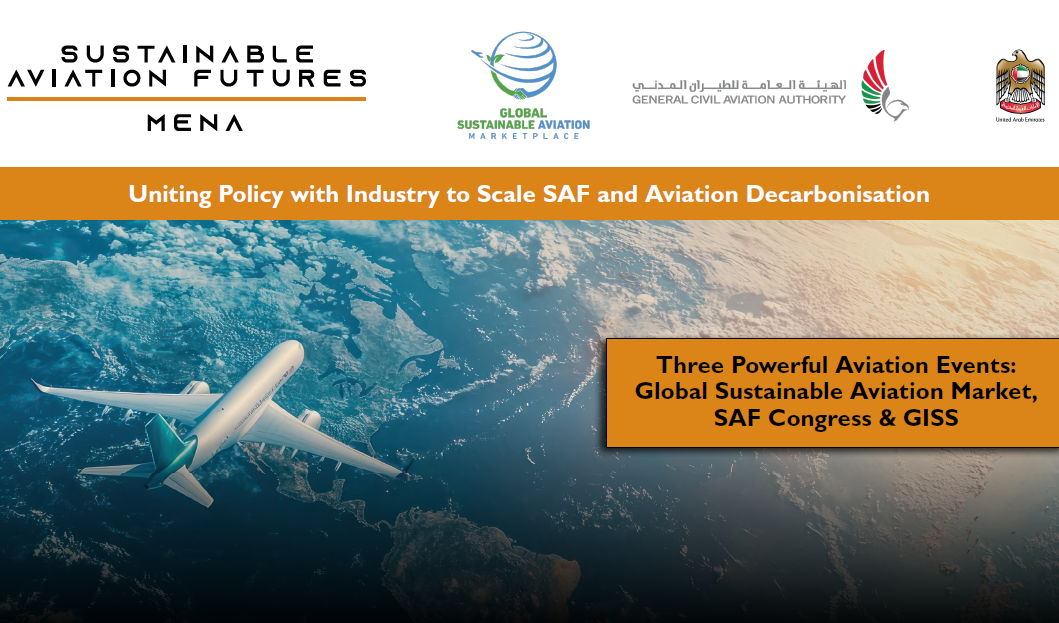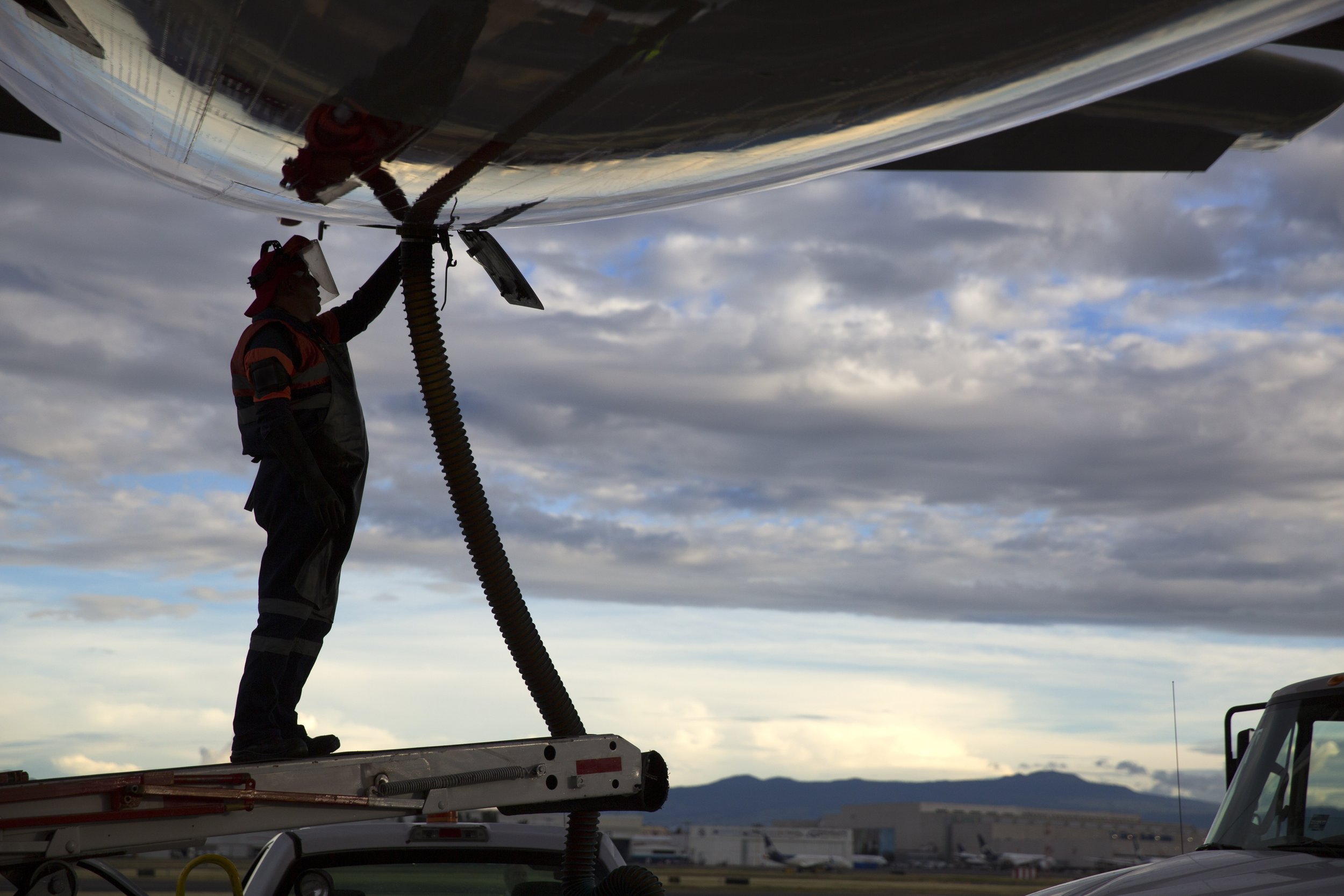
SAF Spotlight
Brought to you by Sustainable Aviation Futures, this content hub will provide the latest strategies for scaling SAF and aviation decarbonisation via a series of exclusive interviews, whitepapers, reports, and industry news.
Featured Content this Month
Visit our YouTube Channel to see the latest SAF Industry Expert Insights and more

LATAM's Natural Advantage: Leveraging regional feedstocks and refining capacity
Although the opportuinities for the LATAM region to be a SAF leader are many, challenges remain, including the need for stronger regional policies, global regulatory engagement, and fair sustainability criteria. With the right policies and investments, SAF development could drive economic growth, create jobs, and more...

Brazil's Leadership in Sustainable Aviation Fuel: Investments, Capacity, and Global Opportunities
Ahead of SAF LATAM, Yuri Schmitke, ABREN/Global WtERT, explores biogas-to-SAF pathways, Brazil’s estimated production capacity, and the economic and policy challenges of scaling SAF. Government incentives, investment in infrastructure, and regulatory support will be crucial in bridging the price gap and positioning Brazil as a key SAF exporter.

Paving the Way for SAF Adoption in Chile: The Role of Vuelo Limpio as a Collaborative Platform
The aviation sector in Chile has strongly recovered from the COVID-19 pandemic, reaching an all-time high in 2024 by transporting just above 28 million passengers. Vuelo Limpio has been tasked with leading the way toward sustainable aviation in Chile, by enabling alignment and coordination across the value chain.

Uniting the Industry to Develop LATAM’s SAF Market
Latin America is uniquely positioned to play a pivotal role in the global SAF market. As the industry faces mounting pressure to decarbonise, regions with abundant sustainable feedstocks, established refining infrastructure, and emerging policy support are critical to scaling SAF production, and LATAM offers all three advantages…

Sustainable Aviation Futures 2024 in Review and Crystal Ball Gazing Survey
2025 marks a crucial juncture for scaling SAF and implementing innovative technologies to meet 2030 decarbonisation targets. With this in mind, we carries out a snapshot survey with our expert speakers and supporters from 2024 and 2025, to capture the industry's pulse on progress towards targets, and readiness to navigate this transformative period.

Guiding airports for SAF strategy implementation
In this whitepaper, NACO explores insights into the impact of SAF on an airport environment, with a particular focus on the role it could play and how it can connect with airlines. Read on for the executive summary, and where to download the full report...

The Missing Piece: Rethinking Biomass for Decarbonizing Aviation – Carbon Compensated Aviation Fuel (CCAF) as a Game Changer
In this article Dr. Hassan El-Houjeiri explores the opportunity for Carbon Compensated Aviation Fuel (CCAF) to scale alongside SAF and eSAF, with the potential to redefine aviation sustainability. CCAF pairs conventional jet fuel with biochar, a negative emissions mechanism that locks carbon away. Read on to discover more...

Under the patronage of His Highness Sheikh Mohammed bin Rashid Al Maktoum: The Global Sustainable Aviation Marketplace to Launch Next Month in Abu Dhabi
Under the patronage of His Highness Sheikh Mohammed bin Rashid Al Maktoum, 1500 Representatives from ICAO Member States to Gather in Abu Dhabi Next February to Shape the Future of Civil Aviation, The 4th ICAO Global Implementation Support Symposium 2025 & the Global Sustainable Aviation Marketplace to Launch Next Month in Abu Dhabi. Read on to find out more about this exciting event…

How U.S. Leadership Can Bolster Energy Security Through Sustainable Aviation Fuel
As the new administration moves full steam ahead on its renewed energy policy, America is uniquely positioned to seize several innovative opportunities to further their energy production. Read on to discover where best opportunities for scaling SAF with policy lay...

The Middle East’s Growing Momentum for SAF and eFuels
The Middle East is emerging as a strategic hotspot for SAF and eFuel production. Already known as a global aviation hub, the region also benefits from abundant renewable energy resources, ambitious policy frameworks, and a willingness to invest heavily in emerging clean technologies. Read on to find out more....

Advancing Sustainable Aviation Fuel (SAF) in the Kingdom of Saudi Arabia: Challenges, Opportunities, and the Path Forward
As a leader in global energy supplies, the KSA has an opportunity to pioneer the rapid scaling of SAF. This article briefly explores the current landscape of SAF in the KSA, highlighting the challenges, opportunities, and a roadmap for deployment.

Treasury and IRS Issue Final Regulations Implementing Section 45V Clean Hydrogen Production Tax Credit
On January 3, 2025, the IRS and Treasury issued long-awaited final regulations (the “45V Final Regulations”) implementing the clean hydrogen production tax credit (the “45V Credit”) under Section 45V of the Internal Revenue Code of 1986, as amended (the “Code”). This Client Report from King & Spalding summarizes the key elements of the 45V Final Regulations.

Building a Sustainable Future for Aviation: Insights and Inspiration from the MENA Region
Aviation connects cultures and drives economic growth but faces tough decarbonisation challenges. The MENA region, with its visionary strategies and clean energy initiatives, can play a pivotal role in transforming aviation into a sustainable, net-zero industry.

Industry Insights with Ralf Diemer, CEO, eFuel Alliance
In this exclusive interview, Ralf Diemer, the CEO of eFuel Alliance answers a round of quickfire-questions on lessons aviation can learn from efuel adoption in other sectors, from policy support to overcoming technical and financial hurdles.

What is Global Sustainable Aviation Markets (GSAM)? 1,000 stakeholders set to meet in Abu Dhabi to set out global pathways to aviation decarbonisation
GSAM is a brand-new initiative, led by the UAE General Civil Aviation Authority, and supported by ICAO and Sustainable Aviation Futures. GSAM offers a world-first opportunity to network with 100s of senior government and industry leaders, while attending 3 powerful aviation events under one roof. Read on to find out more....

Executive Summary: Fueling nature: how e-fuels can mitigate biodiversity risk in EU aviation and maritime policy
In their recent report on the opportunities sustainable fuels, and eFuels specifically, offer to minimise the climate impact of transportation, the SASHA Coalition explore EU policy, and the lessons that aviation can learn from both maritime, and road transportation. Read this executive summary for the key takeaways.

What can we learn from RSB’s study on sustainable feedstock potential in Southeast Asia?
As global demand for SAF surges, understanding the potential and sustainability of feedstock sources is essential – not just for the aviation sector, but also for stakeholders in adjacent fields. In this article, RSB summarise their recent exploration of sustainable feedstocks.

Airline Efficiency for Immediate Emission Reductions
Matthew Fischbacher, an airline captain with over 20 years of experience and an author, explores what operational and technological efficiencies can be implemented immediately, while SAF reaches scale.

Lessons Learned from Oil & Gas: The Risk Landscape for Sustainable Aviation Fuel (SAF)
As Donald Trump prepares to take office again, the future regulatory landscape for SAF is uncertain. Traditional oil and gas companies have faced enforcement challenges from authorities that had an unfavorable view of them. SAF providers and customers can look to those experiences to survey the changing landscape of regulation and enforcement.

Forest-Based Carbon Offsets: Airlines Should Taxi With Caution
For years carbon credits have been used to offset emissions by companies the world over. Increasingly, issues like leakage and the risk of fraud are raised as potential challenges to their effectiveness. This article explores some of those challenges, and how companies can prioritise direct emissions reductions.






